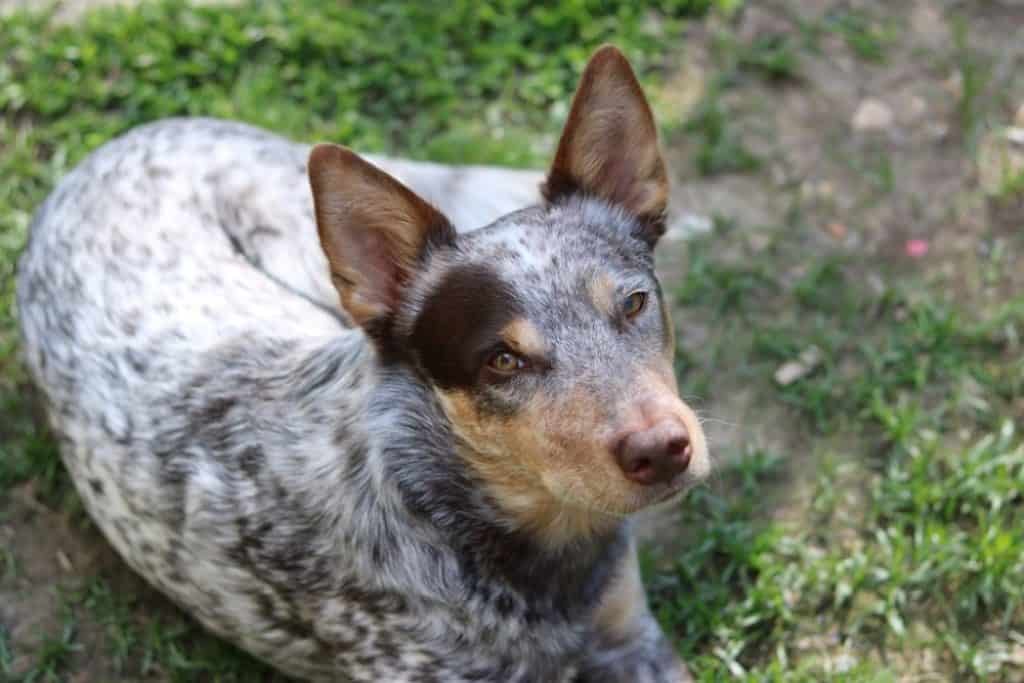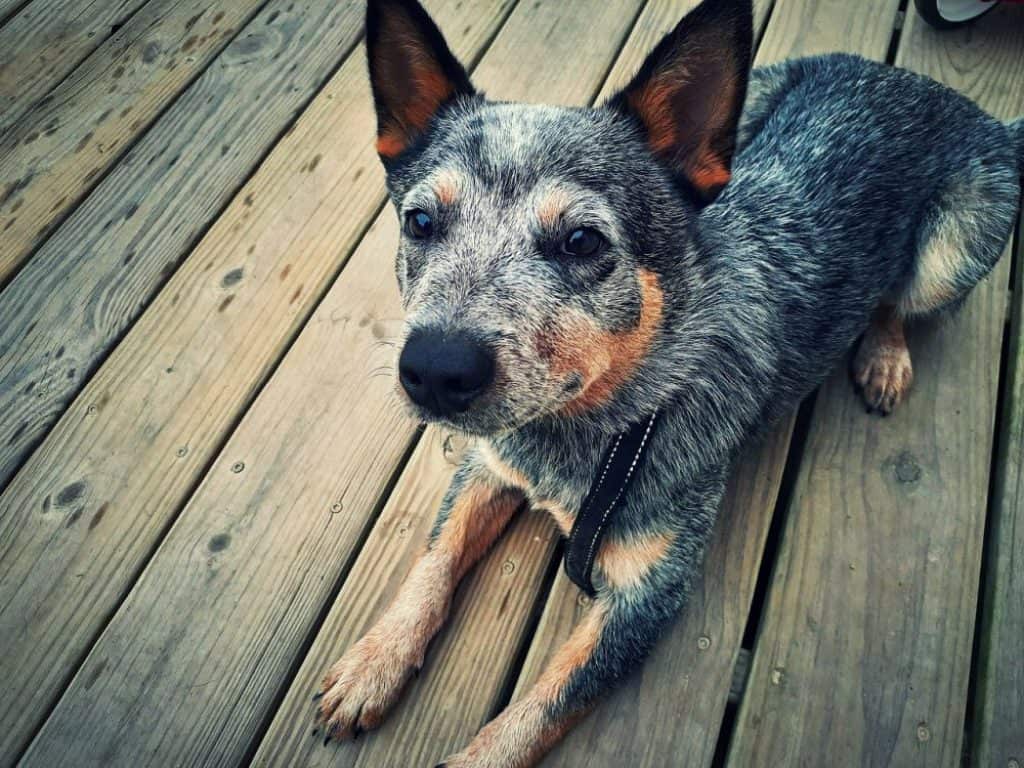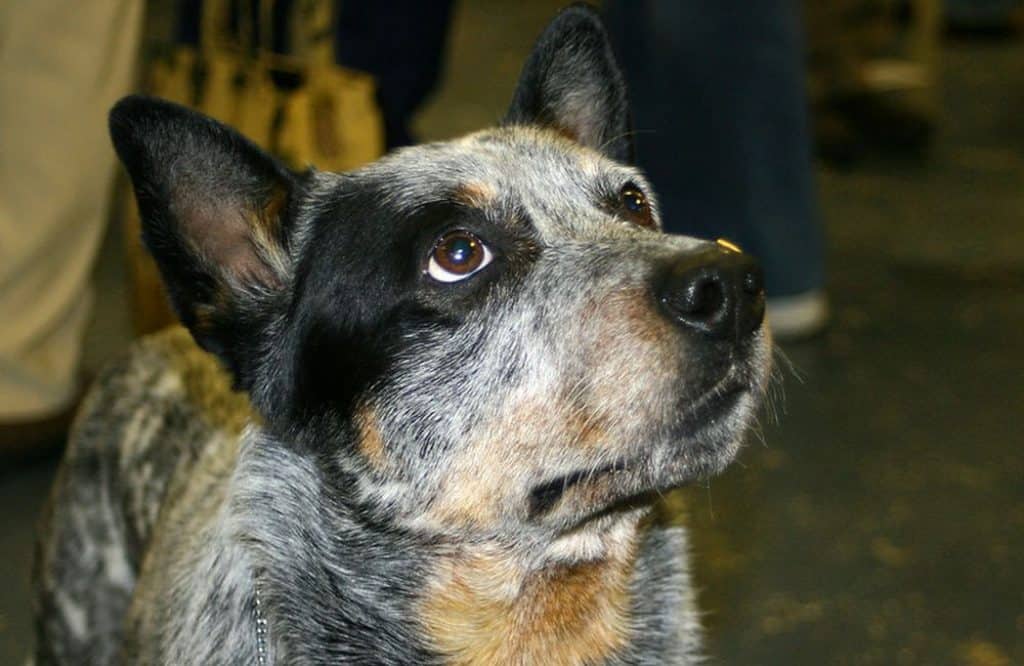Blue heelers are a great dog breed that can really bring some excitement to your home.
But if you have a blue heeler or know anyone with this breed, you know that blue heelers can be a handful.
It’s not that this is a bad dog breed to own, but you need to be properly prepared to train and handle this dog.
So, if you plan on getting this dog breed keep reading this post I have put together.
I will talk about blue heelers in detail here. I will also answer the question of when do blue heelers calm down.
As many people want to know when they can expect their dog to start behaving better.
Other topics related to this question will also be explored here as well.
[wpsm_toplist]
When Do Blue Heelers (Australian Cattle Dogs) Calm Down?

Blue heelers can stay energetic and rambunctious for many years. So, unfortunately, your dog isn’t going to mellow out right away.
When your dog is just born you will see the most amount of energy. Blue heelers can be especially difficult as puppies.
But around the twelve-month mark, your dog will start to mature a little more. This is when things will become more manageable for you as a dog owner.
Still, you need to implement training early on. And even with good training, your dog might not calm down.
In fact, it could take years before you see this breed actually calm down.
Most experts agree that it can take at least four years until your blue heeler calm down. In some cases, it might even take six years till your dog actually lose energy.
This might seem like a long time, but with training and regular activity, you can manage your dog more easily.
I will talk more about how you can train your dog. I will also talk about routines to implement this way you don’t get overwhelmed by your blue heeler.
Are Australian Cattle Dogs Hyper?

You might be wondering whether the blue heelers are hyper. To answer this question simply, your dog can be extremely hypers.
Even more so than other dog breeds. Blue heelers, also known as Australian cattle dogs are not easy to contain and get trained.
Their boundless energy makes them a difficult breed for beginners to handle.
So, I would only really recommend getting this dog if you have experience with other difficult dog breeds.
In addition, you want to make sure that you have the time and patience to deal with this dog’s hyperactiveness.
It’s not a bad thing to own a hyper dog but it can take a lot of energy out of you.
Especially if you already have many responsibilities you need to consider if this is the right pet for you.
Why Are Blue Heelers So Hyper?
Blue heelers come from a long line of herding dogs. So, it makes sense that your pet is so hyperactive.
Herding dogs are specifically bred to work and chase after cattle all day. So they will have boundless energy reserves in comparison to other dogs.
Blue heelers are a mix of all kinds of wild dogs. They also have dingo and collie in them. For herding cattle, makes them an ideal dog.
But when you have a blue heeler at home without any cattle or animals to herd, that energy needs to go somewhere.
That’s why it can be so crucial to exercise your dog on a regular basis! Otherwise, they will stay hyper!
How to Calm Down A Blue Heeler (Australian Cattle Dog)?

Reading about how hyper blue heelers are, you might be wondering how you can calm your dog down successfully.
I’ll talk about the best ways you can calm down blue heelers here. So look over each tip carefully.
Train Your Dog
Proper training is the most important thing you can do for your dog. You need to start training your blue heeler at an early age.
This way they learn how to control themselves and learn how to listen to you.
If your dog is obedient and can obey you then they will start to calm down even if their energy is high.
You need to be consistent and take things slow. But if you keep up with training your dog should be more well behaved.
Most out-of-control dogs are not trained properly.
I recommend using repetition with your pet as this will work best. But really, blue herders are not the worst dogs to train. You just have to keep their attention.
They are some of the most intelligent dogs. And you can expect them to quickly learn and pick up commands.
This dog is also super loyal, so they will want to follow what you say.
Play With Your Dog
The next important step you need to take to keep your dog calm is regular exercise. In other words, you need to play with your dog and make sure they are moving.
If your pet does not have an outlet for their energy, then they will stay hyper and unmanageable.
Remember that your dog was bred to herd animals.
So, they have a lot of pent-up energy. Blue heelers were meant to be working dogs. So they will have to move around a lot to stay calm and happy.
You don’t have to have a crazy exercise routine even. Just go on plenty of walks with your dog.
Also, try throwing frisbees with your pet and chasing them a little.
Buy Plenty of Dog Toys
Dog toys can be great for exercising purposes. These items can be used to play fetch and make your dog run around your backyard.
But also make sure to get toys for your dog to play with on their own. Again, blue heelers have a ton of energy.
So, they need to be occupied for most hours of the day. This means that you need to have interesting and fun toys for your dog to play with.
[amazon box=”B071ZFJ2HD”]
For instance, you can get your dog a [amazon link=”B071ZFJ2HD” title=”puzzle toy” link_icon=”amazon” /] that hides treats.
Blue heelers are smart and will like to figure out how to reach the treats.
Your dog is highly intelligent and this will make them happy.
[amazon box=”B00CPDWT2M”]
Chewing on a toy is also a great way to keep your dog’s instincts in check.
Since blue keepers have a tendency to nip at people.
Bring Your Dog Out
Finally, if you want to keep your dog calm, I highly suggest socializing with other people and dogs. You want to do this often, really, as much as you can.
In general, dogs thrive when they are around other people and animals. But you want to make sure that you are socializing your dog early on.
Like training, dogs need to meet other people and pets when they are young. Otherwise, they could end up attacking or getting aggressive with others later on.
Blue heelers can get aggressive towards other people. So, make sure your dog is on a leash and see how they interact with your guests for the first time.
But if you slowly let them meet other people and pets then it will be a lot easier to keep them calm.
And playing with other people and dog breeds can also give your dog the chance to stay active.
Again dogs do really well when they have the chance to be playful and move around.
Australian Cattle Dog Behavioral Problems and Issues

Behavior problems are not uncommon with this dog breed. In fact, your dog could have more behavioral issues than your typical dog.
This doesn’t mean that you shouldn’t get a blue heeler. But it does mean that you need to know what to expect.
I’ll go over the most common behavioral issues here. This way you know what you need to work on with your pet.
Hyperactivity
Of course, one of the biggest issues with your dog will be hyperactivity. Your pet will not settle down easily.
And they might beg and whine for attention often because they are bored and full of energy. This isn’t necessarily a bad thing.
But blue heelers do act like puppies much longer than other dogs. So, this could be a potential turn-off for some dog lovers who want a more calm breed.
It’s not that you will never get your dog to be calm. But it will take a lot longer to train and get your dog under control.
So, expect your dog to be over hyper for at least the first year.
Aggression
Other behavioral issues include aggression. This is not a dangerous breed on the whole.
But blue heelers are bred from collies, dingo’s, and other wild dogs that can be aggressive.
Your dog might be on the aggressive side too as a result.
And they might even have a tendency to nip playfully often. Really, your dog won’t attack you outright, As these dogs are truly loyal to their owner.
But they could attack other animals or people. Especially if you don’t train them right. This could be a major issue.
Loyal and aggressive dogs can be good to have around as protection. Though you don’t really want your blue heeler to be attacking anyone.
So, as I said before, ensure that your dog is trained and socialized early on.
Herding Behavior
Finally, herding behaviors can also stick with your pet. Your dog is not in a herd anymore, and they no longer live on a farm.
But since they were bred to do certain tasks, they might end up displaying behaviors that you don’t like.
For instance, the biting or nipping of a herding dog can be common. Regular training and exercising will help to lessen these behaviors.
But in some dogs, these instincts can be a lot stronger than normal. In this case, I would recommend getting herding training.
This will help to teach your dog to be more domestic and calm.
Also related to herding instincts and behavior is playfulness. It’s not that you don’t want your dog to be unplayful.
But since blue heelers are herding dogs they can be extra playful. This could be annoying for some dog owners.
But again playing with your dog and being active should really help with these issues.
However, if you have a family, think again about getting a herding breed.
Blue heelers and other dogs like them can be a little rough with younger kids. So they might not be an ideal pet for a family.
Conclusion
Blue heelers are an ideal dog breed for people who love dogs and love being active with their pets.
However, you need to be properly prepared to have this dog in your home.
Blue heelers have certain traits and personality attributes that make them highly energetic.
In other words, blue heelers can be highly hyper and be hard to calm down. In fact, they can be some of the most hyper dogs.
Especially if they aren’t trained or socialized. You want to be mindful of this and make sure that you have a plan in place for your pet.
Start by scheduling your dog’s day and making sure there is plenty of time for them to play and be active and important.
Remember, it is possible to calm your dog down, but only with effort and time. Really, most blue heelers won’t calm down fully till they are four or six.







